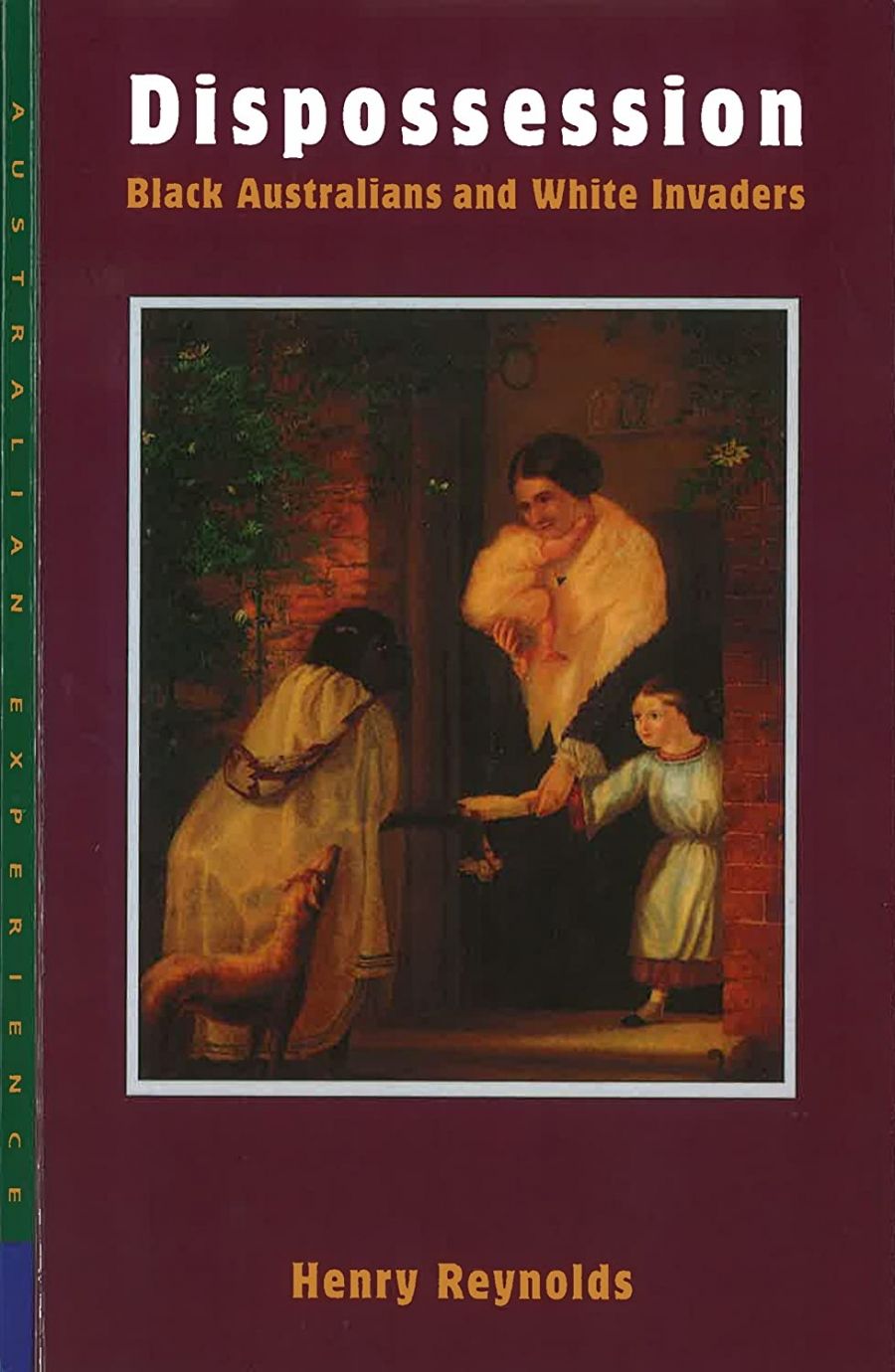
- Free Article: No
- Contents Category: History
- Review Article: Yes
- Online Only: No
- Custom Highlight Text:
Anyone interested in Aboriginal history or race relations will probably be familiar with the work of Henry Reynolds. His books include The Other Side of the Frontier (1982), Frontier (1987), and The Law of the Land (1987). This latest book is a collection of documents, ones that provided much of the source material for Reynolds’s earlier works. In this book, he tell us in the preface, ‘our forebears speak for themselves and speak in many voices’.
- Book 1 Title: Dispossession
- Book 1 Subtitle: Black Australians and white invaders
- Book 1 Biblio: Allen & Unwin, $17.95 pb, 226 pp
From a modern point of view perhaps, one of the most striking features is the extent to which bigots were prepared to put their views in print. As late as 1907, a letter writer to the Townsville Herald stated that Aboriginals ‘should be classed with the black snake and death adder, and treated accordingly’. But there were others who saw the Aboriginals as only fighting their oppressors. A correspondent to the Launceston Advertiser wrote in 1831 that ‘they have never been subdued, therefore they are not rebellious subjects, but an injured nation, defending in their own way their rightful possessions, which have been torn from them by force’. And some believed, Joseph Conrad-like, ‘We are all savages; look beneath the thin veneer of our civilization and we are very identical with the blacks.’
The readings are full of unconscious irony. The missionary D. Mathews describes how he encouraged the Aboriginals in his charge to formally marry by locking them in a storeroom and starving them. ‘Strange to say,’ wrote another observer in 1826, ‘civilization has been the scourge of the Natives; Disease, Crime, Misery and Death have hitherto been the sure attendants of our intercourse with them.’ Yet two years earlier another writer claimed, ‘On the whole, the state of the black natives is, in general, as good at least as it was before the establishment of our Colony; we have left them all that they enjoyed before, or have supplied the deficiency.’
Many commentators display a strong sense of history, and concern with how posterity might judge them. A ‘gentleman’ in early New South Wales wrote:
what will future generations think of our boasted Christianity, of our lauded Philanthropy, when our posterity read in the early page of Australia’s history the misery and ruin which marked our adoption of this land; – when they find recorded that our proprietorship of the soil has been purchased at such a costly sacrifice of human happiness and life.
Some claimed it was a sense of history which distinguished the white man from the Aboriginal, and used it to justify violence. A writer to the Queenslander in 1880 stated:
in all our breasts there is a whisper that we too by some strange chance may be known to posterity. This brings us here to wrest the lands of a weaker race from their feeble grasp, and build up a country that our children shall inherit; and this feeling is unknown to the native of Australia.
The anthropologist W.E.H. Stanner asked in 1939, ‘Will history be content to record their disappearance, and leave it at that?’ The most he could find was ‘a few vestigial regrets appearing here and there in a mass of solid indifference’. More recently, historian Geoffrey Blainey suggests that proposals for land rights and hereditary privileges to Aboriginals ‘are based on a version of history which is much less valid than its exponents believe’. On this Reynolds gives himself the last word, stating that others will ‘use our attitude to the Aboriginal experience as the acid test when they come to judge if white Australians have assimilated to the continent or are still colonists at heart’.
The book’s thirty-six illustrations add much, although their interpretation occasionally stretches credibility. The caption to a photo of Native Police describes the sub-lieutenant as looking ‘cold and sadistic’ and the sergeant as ‘lecherous’. That the Native Police were responsible for much bloodletting is evident from the extracts, but such photographic character assessment smacks of nineteenth-century phrenology. Another photo featuring two Aboriginal children dressed in European clothes is captioned: ‘They look anxious and miserable. The girl looks resigned, the boy has a hint of future rebellion.’ To me, they just looked pissed off.


Comments powered by CComment